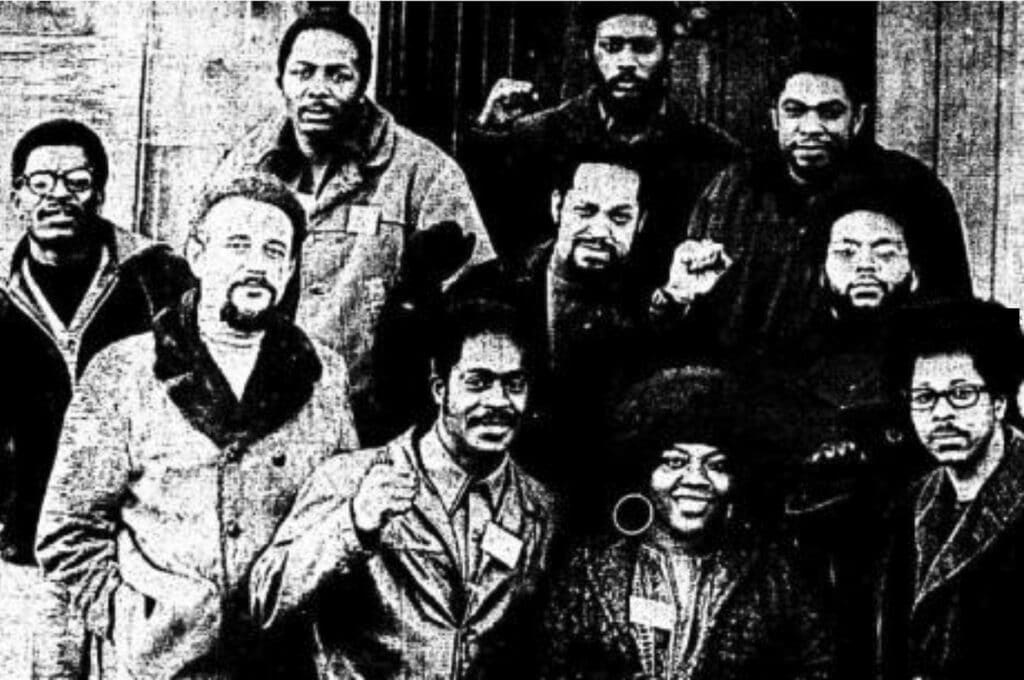Back in the 1960s, as the Civil Rights movement spread through American cities large and small and discussions of the use of Black Power multiplied, Detroit’s auto factories became the focus of protests by the Black working class.

The League of Revolutionary Black Workers, according to most accounts of its origins, began to ferment in Detroit following the disturbances, which engulfed the Motor City in the summer of 1967.
In the wake of the 1967 rebellion, as it’s known in the Black community, Black workers become more vocal about working conditions in Detroit as the pressure for more production increased during the economic expansion that marked 1960s.
At the same time, the racism and discrimination that had been a hallmark of life in industrial Detroit for decades remained a fact of life for rising generation of young Black workers.
One militant Black worker at the Dodge plant in Hamtramck, is quoted by William Serrin, the author of “The Company and the Union,” as saying, “Black Workers, they work on the dirtiest, nastiest noisiest jobs.”
Black workers laboring in old factories where maintenance was never a priority, ultimately rebelled, staging wildcat strikes, in defiance of both the company and the United Auto Workers at Dodge Main in Hamtramck in the spring and summer of 1968.

One strike at Dodge Main spread the movement
The walkouts, which also were supported by rebellious white workers, led to the creation of the Dodge Revolutionary Union Movement, or RUM, according to “Detroit: I Do Mind Dying,” an oft-cited account of rebellion by Black workers in Detroit, written by Dan Georgakas.
“Events in the Detroit factories were not unique, either in the United States or in advanced industrial society as a whole. During the late 1960s, strong student and worker groups throughout Europe became particularly powerful in Italy and France,” according to the book.
Jill Rowe, a professor at Western Michigan University, writes in a paper about the rebellion, “The strike, which occurred at the Dodge Main factory, was organized in response to a speedup in the lines. Although the wildcat strike was led by a coalition of workers, including Polish women workers and Black workers, punishment following the action was disproportionately landed upon Black workers.

“Seven people, including five Blacks, were fired following the action, with all but two, Gerald G. Baker and Bennie Tate, eventually were rehired. Following the strike, nine workers from the plant formed close relationships with the editors of ‘The Inner City Voice,’ and decided to form the first Revolutionary Union Movement, called the Dodge Revolutionary Union Movement,” according to Rowe
Rowe adds, “The League grew as a result of the United Auto Workers’ failure to address the racist and inhumane working conditions of black people employed in Detroit’s manufacturing sector. It consisted of radical, prolific blue-collar black workers with strong organizational skills. Historic and heroic struggles of black people provided the movement’s strengths, inspiration was garnered by the revolutionary struggles of the developing world, and their convictions were guided by a Marxist-Leninist ideology.”
Thousands of workers participated in strikes, and the various RUM chapters, which had spread beyond Chrysler to General Motors and Ford and even UPS, coalesced to form the League of Revolutionary Black Workers.

Frustration in the plants led to the movement
“Black autoworkers were frustrated by the limits on both their economic opportunities at the plant and on their power within their union. Although black autoworkers were employed in a relatively high-paying industry, they were kept in the lowest-paying and most dangerous jobs, they were not given opportunities for advancement into management, and were most often under the supervision of older white males,” according to another account of the League’s history found on websites chronicling its rise and fall.
“They also alleged that the UAW was a racist union because it focused only on winning pay increases and did not address the discrimination black workers faced. Black autoworkers were also aware that the UAW’s leadership was almost exclusively white and male.”
The LRBW was very active and had a sizable influence for two years before it abruptly disbanded in 1971, RUM and the LRBW left behind a legacy of increased political awareness of Black workers, especially in Michigan, and they also increased the number of Black leaders at GM and the UAW, according to another account.
It also succeeded in reaching deep into Detroit’s politics in the 1970. Ken Cockrel, a radical lawyer, who tangled repeatedly with the Detroit over its heavy-handed tactics, served on the board of LRBW and defended an autoworker, who shot dead two foreman as well as another worker inside a Chrysler plant in 1970.
Despite its long reach into the community, the League’s influence, however, was ultimately diluted by factional infighting about strategy, tactics and direction.

At the same time, historian Emma Rothschild in her book about the auto industry, “Paradise Lost,” which was written during the 1970s, noted that by 1972 more and more factories were moving out of Detroit, taking jobs with them.
The 1960s live on
The echoes of the Revolutionary Union Movement could be heard for years afterwards in other grass roots efforts such as Locals Against Concessions and New Directions that sought to shape the policies and practices of the United Auto Workers as it grew more bureaucratic and more focused on protecting what it had gained rather than breaking new ground, according to critics.
One measure the League’s influence is that General Baker, one of its founders and key theorists, is cited often by union activists, looking to change the union today.
But to counter the influence LRBW, the UAW also reached out to recruit more Black workers to run for union office, altering the union’s primary and secondary leadership.
League of Revolutionary Black Workers Forced Change in the Auto Industry, UAW - Paul Eisenstein
Read More
Bagikan Berita Ini

















0 Response to "League of Revolutionary Black Workers Forced Change in the Auto Industry, UAW - Paul Eisenstein"
Post a Comment